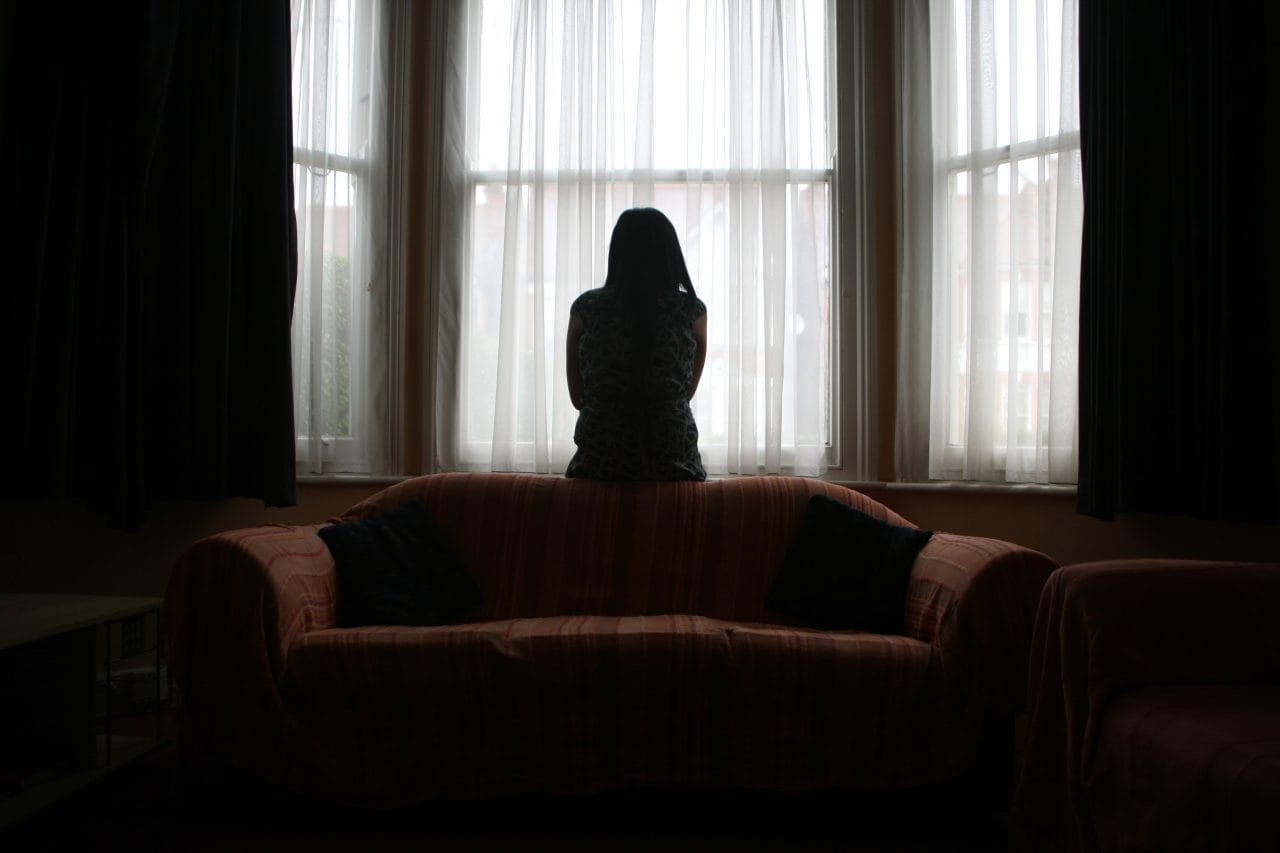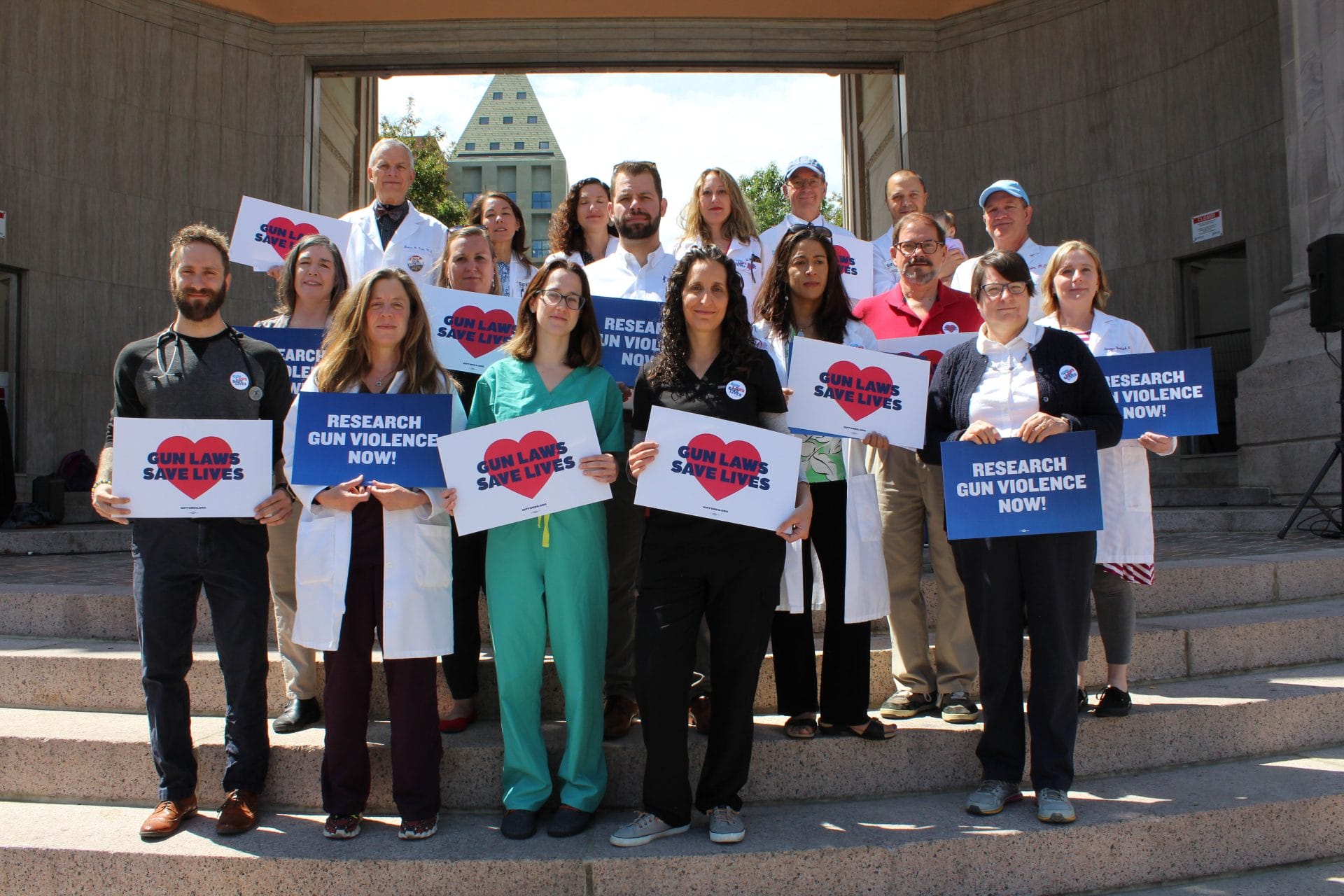
America’s suicide problem is a gun problem: the majority of American suicide deaths involve firearms. But these tragedies are preventable.
Suicide is the untold story of gun violence in America. While firearms are used in just a small fraction of suicide attempts, because they are so uniquely lethal, they are responsible for a majority of American suicide deaths. By enacting policies to limit at-risk people’s access to firearms during moments of crisis, we can reduce suicide rates and save lives.
You are not alone. If you or a loved one are contemplating suicide, please call the free and confidential national Suicide & Crisis Lifeline by dialing 988 or access help through their website at 988lifeline.org.
Why This Matters
In 2010, Kerry Lewiecki graduated law school and was planning his wedding. Though Kerry grappled with a chronic pain condition, he was known as a positive person. A few weeks after his graduation, he bought a gun and killed himself. A receipt found near his body indicated that he had bought the gun within one hour of his death. His family didn’t think he had ever fired one before.
Suicide attempts are often impulsive acts, and a majority of people who attempt suicide do not go on to die by suicide. But those who reach for a gun during suicidal crises rarely have a second chance. Statistically speaking, Kerry would likely still be alive today if he hadn’t been able to gain immediate access to a gun.
Suicide rates have been rising across the US for nearly two decades, surrounded by a culture of silence and stigma. Many people falsely believe that suicides are rare anomalies and that we are powerless to prevent them. The gun lobby has perpetuated this myth and vehemently denied any link between gun access and suicide. Instead, the NRA and other gun lobby groups has often suggested that without access to firearms, a person in a suicidal crisis would simply “find another way.”
These beliefs are persistent and widespread, but they are wrong. If we understand what drives this crisis, we can meaningfully address it.

SPOTLIGHT
NO SUICIDE IS INEVITABLE
Our report Confronting the Inevitability Myth: How Data-Driven Gun Policies Save Lives from Suicide provides an in-depth examination of the deadly role guns play in suicide in America and outlines the policies and intervention programs that have been proven to help prevent these tragedies.
Read MoreThe Problem
Over 195,000 Americans have died by firearm suicide since 2010. The most persistent, damaging misconception about suicide is that people who attempt it have reached a point of no return, and their deaths are inevitable. The facts contradict this inevitability myth: the vast majority of people who attempt suicide survive, and go on to live out their lives without attempting suicide again. In fact, up to 16 million Americans alive today have survived a suicide attempt. But conspicuously missing from survivor stories are those of people who attempted suicide with a firearm.
Most people attempt suicide impulsively during acute periods of mental crisis, typically using whatever means is most readily available. People are at least 40 times more likely to die if they attempt suicide with a gun instead of other common methods. This is why firearms account for 5% of life-threatening suicide attempts in the United States but over 50% of suicide deaths. This is also why states with unrestricted access to guns suffer elevated suicide rates.
The data categorically shows that gun access is the most significant factor in states’ overall rates of suicide. Compared to other variables, gun access is the most correlated with suicide death on an individual level as well. Responsible gun policy reform is a critical component in any effort to save lives from suicide in America.
THE FACTS
Source
Centers for Disease Control and Prevention, National Center for Health Statistics. Underlying Cause of Death 1999-2021 on CDC WONDER Online Database, released in 2023. Data are from the Multiple Cause of Death Files, 1999-2021, as compiled from data provided by the 57 vital statistics jurisdictions through the Vital Statistics Cooperative Program. Accessed at <a href=”http://wonder.cdc.gov/ucd-icd10.html”>http://wonder.cdc.gov/ucd-icd10.html</a> on Feb 10, 2023. Calculations were based on five years of most recently available data: 2017 to 2021.

1 in 5 gun suicide victims are veterans
Source
“2019 National Veteran Suicide Prevention Annual Report,” US Department of Veterans Affairs, Office of Mental Health and Suicide Prevention, September 2019, https://www.mentalhealth. va.gov/docs/data-sheets/2019/2019_National_Veteran_Suicide_Prevention_Annual_ Report_508.pdf. See also, “National Suicide Data Report Appendix,” US Department of Veterans Affairs, Office of Mental Health and Suicide Prevention, https://www.mentalhealth.va.gov/ suicide_prevention/data.asp.
Source
David Owens, Judith Horrocks, and Allan House, “Fatal and Non–fatal Repetition of Self–harm: Systematic Review,” The British Journal of Psychiatry 181, no. 3 (2002): 193–199.
The Solution
Research from around the world has found that reducing access to the most lethal common methods of suicide can substantially reduce a country’s suicide rate. For example, before 1960, inhalation of domestic gas (used for heating and cooking) was the leading suicide method in the United Kingdom. After the UK transitioned to a nontoxic source of natural gas, gas suicides fell to nearly zero. Though suicides by other methods moderately increased—evidence that some suicidal people were substituting other means—the overall suicide rate fell by nearly one-third.
Similarly, widely accessible pesticides were once the leading method of suicide in Sri Lanka. In the 1990s, the government placed restrictions that limited the availability of the most highly toxic pesticides, and overall suicide rates dropped by 50%. Researchers found that people were still attempting suicide at about the same rate—they just weren’t dying as often.
In order to address America’s suicide problem, legislators must address our most lethal common means of suicide: firearms. Policies like extreme risk protection order laws, which limit a person’s access to firearms during a temporary suicidal crisis, and policies that delay impulsive gun purchases, like waiting periods and licensing laws, have been found to significantly reduce suicide.
Programs led by health care professionals to identify patients at high risk of suicide and educate them about the health and safety risks of firearms have also been proven effective at reducing suicides.
What Giffords Is Doing
Giffords is working to debunk the dangerous myth that suicides are inevitable through education, research, and advocacy, building on our comprehensive report on firearm suicide Confronting the Inevitability Myth: How Data-Driven Gun Policies Save Lives from Suicide.
We’re also fighting to develop, pass, and implement lifesaving policy reforms at the state and federal levels to combat rising suicide rates. Our efforts include promoting universal background checks, extreme risk protection order legislation, child access prevention policies, and waiting period reforms. We also fight back against gun lobby “gag order” laws that prevent doctors from talking to their patients about safe storage of firearms.
We’ve helped successfully draft and enact extreme risk protection laws in nearly 20 states since 2014 and helped develop the Extreme Risk Protection Order Act, which passed the US House of Representatives in 2019, to support implementation of these new laws. We also were instrumental in developing and passing H.R. 8, the Bipartisan Background Checks Act, in the US House, and have worked to successfully enact new state-level background check laws in 10 new states since 2013. We also worked to successfully convince Republican governors to sign waiting period legislation in multiple states.
The research is clear: firearm suicides are not inevitable. We’re committed to doing everything in our power to reduce gun access among individuals in crisis so that they can get the help and support they need.
SUPPORT GIFFORDS
We’re in this together. To build a safer America—one where children and parents in every neighborhood can learn, play, work, and worship without fear of gun violence—we need you standing beside us in this fight.



